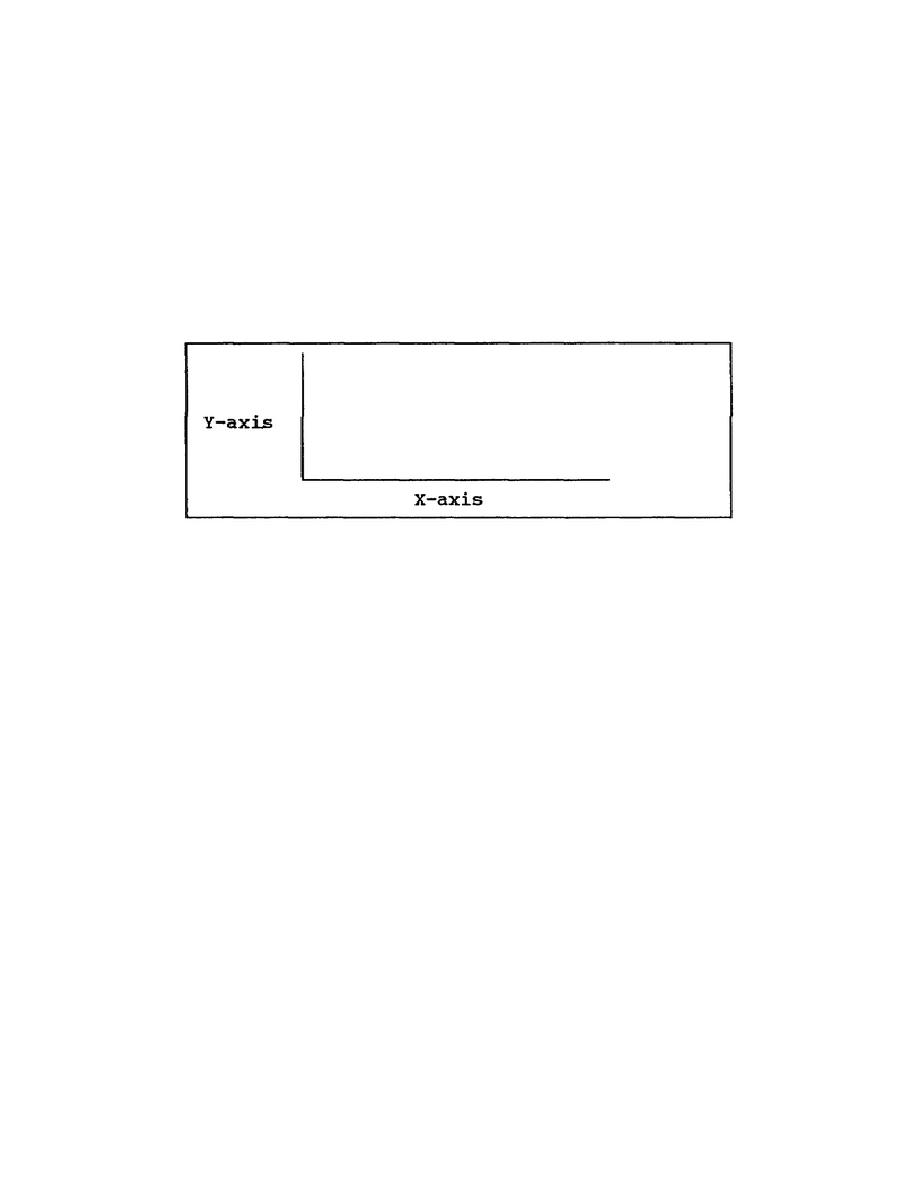
(a) Plotting data on vertical bar or column charts. Prior to
drawing the chart, you must select the size of the paper and the proper
scale (as discussed earlier in this part of the lesson). The size of the
chart determines the size of the paper you must use. The chart should
fill the entire work piece proportionally, including space for margins,
explanatory notes, and the legend.
When you have determined the size of the paper and scale, you can begin
constructing the chart using a nonreproducible blue pencil.
When
constructing this type of chart, there are two lines that serve as the
base of the chart, the Y-axis (vertical line) and the X-axis (horizontal
line) (figure 1-12).
Figure 1-12.
X- and Y-axis
To illustrate the steps required to construct a vertical bar or column
chart, this portion of the lesson describes the steps required to
complete the chart in figure 1-13. This chart shows the base pay of an
E-4 with 5 years of service. This chart also shows the base pay every 3
years from October 1, 1958 through October 1, 1970, using the following
data:
1958
-
170.00
1961
-
170.00
1964
-
210.00
1967
-
254.00
1970
-
330.00
A column chart uses the X-axis for the data or time element. Reviewing
the data given above, you find you must plot 9 years or columns on this
axis. You start by marking the required spaces and the columns on the X-
axis, except for the front and back space. These spaces equal 2/3 of the
width of a column (figure 1-14).
1-22
SS0530



 Previous Page
Previous Page
